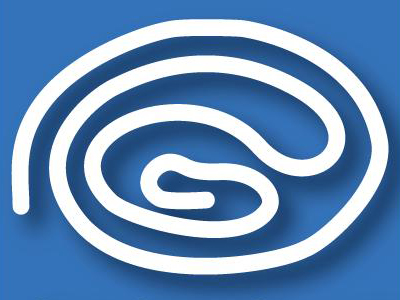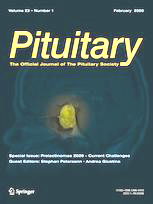Revised October 17, 2014
CONSTITUTION
(As discussed by the Executive Committee 13/1-93 -with minor revisions of May 1993)
Approved by Council June 8th 1993
Approved by General Assembly June 3, 1994
Draft revision July 2000
Revised version approved September 2000
Revision made and approved by General Assembly in Singapore October 17, 2014.
Revision made and approved by General Assembly in Tel Aviv November 8, 2016.
GROWTH HORMONE RESEARCH SOCIETY STATUTES
ARTICLE I - AIMS - HEADQUARTERS
Section 1.
The Growth Hormone Research Society was founded in Madrid October 5, 1992.
Section 2.
The aim of the Society is to be an independent, non-profit making, international scientific society for promoting scientific exchange and research in the field of growth hormone and related substances.
The mission is to bring together scientists, physicians, and other persons, working in the field of growth hormone and related substances, in order to facilitate exchange of information and collaboration.
The objectives are to arrange scientific meetings, to facilitate collaborative studies, to create international consensus guidelines in areas of growth hormone related issues, to facilitate training of clinicians and scientists, as well as provision of research grants, and to raise funds to support these activities, while remaining independent of commercial entities.
Section 3.
The Headquarters of the Society will be in Aarhus, Denmark.
ARTICLE II - MEMBERSHIP
Section 1.
Any individual or corporation in full possession of civil rights and subscribing to these Statutes, and upon approval of the Council, may be a member of the Society as follows:
a) Active Member. An individual working within the field of growth hormone and related substances holding a medical or scientific degree, required to pay a membership fee, entitled to vote at General Assemblies, and eligible for election to the Council and to the Executive Committee.
b) Associate Member. An individual or corporation interested in growth hormone related research, required to pay a membership fee, but not entitled to vote and not eligible for election to the Council or to the Executive Committee.
c) Supporting Member. An individual or corporation giving substantial material aid to the study of growth hormone and related substances, required to pay an annual membership fee, but not entitled to vote and not eligible for election to the Council or to the Executive Committee.
In addition, the General Assembly may, at the nomination of the Council, confer Honorary Membership upon any individual, whose medical or scientific contribution to research of growth hormone and related substances has been outstanding. Honorary Members do not pay membership fees, are entitled to vote, but are not eligible for election to the Council or to the Executive Committee.
Section 2.
Application for membership, including a brief curriculum vitae, shall be addressed in writing to the Council, whose decision is final. The Council is not required to give its reasons for refusing an application.
Section 3.
The income of the Society is derived from:
a) The membership fees, the amount of which is decided by the General Assembly.
b) Donations, gifts and bequests made to the Society.
c) Surplus that might be derived from meeting activities of the Society.
Section 4.
The Society is a non-profit international organization incorporated under the civil laws of Denmark.
Membership of the Society incurs no individual liability for commitments entered into by the Society: these are guaranteed only to the extent of the Society's assets.
Section 5.
Membership may be terminated by resignation, which must be notified in writing to the Council six months prior to the end of the financial year; through death; through dissolution of the Society; in the case of corporations, through bankruptcy; or through expulsion decided upon by the Council, which is required to state its reasons for such action, and the decision has to be approved by a majority of the General Assembly. In these cases, the members lose all their rights to any benefits of membership.
ARTICLE III - ORGANISATION
Section 1.
The organisation of the Society comprises:
a) The General Assembly.
b) The Council.
c) A President, a President-elect, an immediate past-President and a Secretary, who comprise the Executive Committee.
d) Two Honorary Auditors.
a) General Assembly
Section 2.
The members of the Society shall meet together in General Assembly upon notification by the Council. In addition, Extraordinary General Assemblies may be held at such other times as a quorum of the Council may decide. An Extraordinary General Assembly shall be convened if requested by one fifth of the total Active Membership of the Society.
Section 3.
Notices concerning Ordinary General Assemblies must be sent to all members at least 15 days prior to the meeting.
Notices concerning Extraordinary General Assemblies must be sent to all members 1 month prior to the date. The Notice must state the place at which the Assembly is to be held, which needs not necessarily be the Headquarters of the Society
Section 4.
Societies and corporations, who are supporting members, may be represented by one or more persons from their Board of Management, provided that agreement has been obtained in advance from the Council. Members may not be represented by another member or by a third person.
Section 5.
The General Assembly may take decisions regardless of the number of members present, each member having one vote. An absolute majority of the votes cast is necessary for decisions as well as for elections. Decisions regarding the conferring of Honorary Membership or the dissolution of the Society shall be decided by a two-thirds majority of the votes cast.
Section 6.
The General Assembly is the supreme body of the Society. It elects the Council and the Honorary Auditors; it approves the financial statements; decides the membership fees; and discusses all topics included in the agenda, as well as all individual proposals of which the Council has been informed in time for inclusion in the agenda for the next Assembly.
b) The Council
Section 7.
The Council consists of the President, the President-elect, the immediate past-President and the Secretary, and not less than 4 and not more than 8 members selected from the Active Members and elected by the General Assembly.
The President is nominated by Council and elected by the General Assembly to serve for 3 two-year periods as President-elect, President and immediate past-President, respectively. Eligible as President are members, who have served in Council for at least 4 years.
The Secretary is appointed by Council for 4-year periods - and approved by the General Assembly.
Council may appoint a Treasurer of the Society who serves for a 4-year period. The appointment should be approved by the General Assembly. Eligible as Treasurer is a member of Council who has served the Society for at least 4 years. The Treasurer holds a seat in the Council.
Council appoints a Nomination Committee, consisting of 6 members outside Council serving for 6 years - with two new members appointed every 2. year. The Nomination Committee nominates two candidates for each vacant seat in Council - aiming at equal representation in Council between paediatricians, internists, and basic scientists, as well as at a reasonable geographical representation.
Council members are elected by the General Assembly for a 4-year period with one immediate re-election possible.
The Council directs the general activities of the Society and takes all necessary measures and decisions for the proper functioning of the Society in order to achieve its aims.
A quorum consists of seven or more members of the Council.
Section 8.
The Council shall meet at least once a year upon notification by the President or in his absence by the President-elect, and shall keep itself informed of all matters of interest to the whole Society. Its decisions are taken by an absolute majority of the members present. Decisions can also be taken by correspondence. Minutes of the meeting of the Council shall be kept and shall be signed by the President and Secretary upon confirmation of their being a true record.
c) The Executive Committee
Section 9.
The Executive Committee consists of the President, the President-elect, the immediate past-President and the Secretary.
The Executive Committee keeps itself informed of all questions of interest to the Society, manages the assets of the Society, and assumes all functions which are not reserved to another body of the Society. The Executive Committee has the power to bind the Society in financial matters and has the authority to designate the Treasurer to represent the Executive Committee towards the bank. The Executive Committee informs the Council of any decisions taken. The minutes of the meetings of the Executive Committee shall be kept and shall be signed by the President and Secretary upon confirmation of their being a true record, and shall be circulated to Council-at-large.
d) Honorary Auditors
Section 10.
The General Assembly shall elect biannually two Honorary Auditors who will be eligible for re-election. They will advise the ordinary General Assembly of the income and expenditure account and Balance Sheet.
ARTICLE IV - MISCELLANEOUS
Section 1.
The financial year shall correspond to the calendar year. However, the first financial year will begin on the day of the formation of the Society and shall end on 31st December 1994.
Section 2.
In the event of dissolution of the Society the Executive Committee shall be responsible for the liquidation of the assets.
Any remaining assets at that time shall be transferred to an institution pursuing similar aims to those of the Society.
| 


